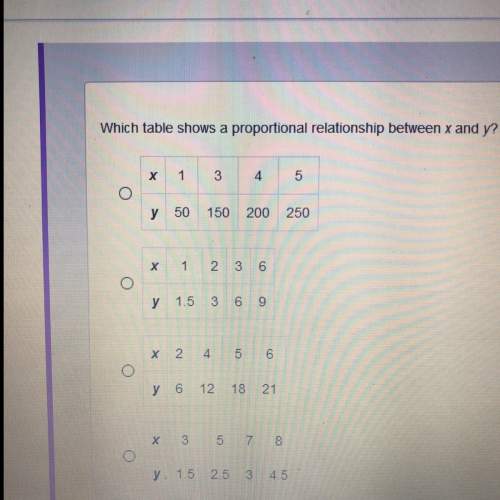
Mathematics, 24.03.2020 18:37 couscous5307
Two types of coins are produced at a factory: a fair coin and a biased one that comes up heads 60 percent of the time. We have one of these coins, but do not know whether it is a fair coin or a biased one. In order to ascertain which type of coin we have, we shall perform the following statistical test: We shall toss the coin 1000 times. If the coin lands on heads 550 or more times, then we shall conclude that it is a biased coin, whereas if it lands on heads less than 550 times, then we shall conclude that it is a fair coin. Use a normal approximation to compute the following probabilities (ignore continuity correction). (i) If the coin is actually fair, what is the probability that we shall reach a false conclusion? [7] (ii) If the coin is actually unfair, what is the probability that we shall reach a false conclusion? [8] Your

Answers: 1


Other questions on the subject: Mathematics




Mathematics, 22.06.2019 03:50, AlexBeWare1210
Gigi earned $65 for 5 hours of gardening. she earned $90 for 9 hours of office work. which statement correctly compares gigi’s earning per hour for gardening and office work? she earned $3 more per hour for office work than for gardening. she earned $4 more per hour for office work than for gardening. she earned $3 more per hour for gardening than for office work. she earned $4 more per hour for gardening than for office work.
Answers: 1
You know the right answer?
Two types of coins are produced at a factory: a fair coin and a biased one that comes up heads 60 pe...
Questions in other subjects:


Mathematics, 15.07.2020 14:01


Mathematics, 15.07.2020 14:01

English, 15.07.2020 14:01



Social Studies, 15.07.2020 14:01

Mathematics, 15.07.2020 14:01

Biology, 15.07.2020 14:01



 and standard deviation
and standard deviation  , the zscore of a measure X is given by:
, the zscore of a measure X is given by:
 ,
,  .
.













